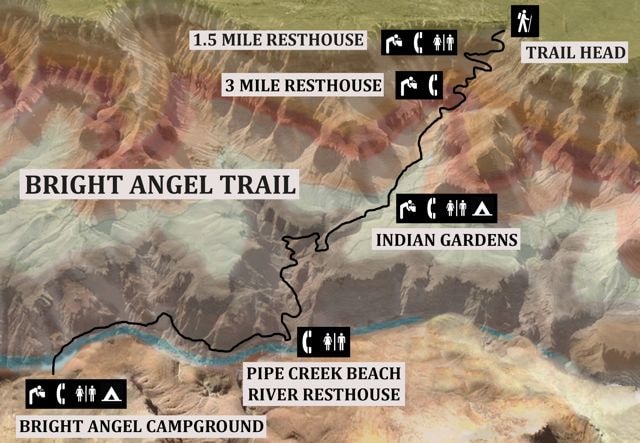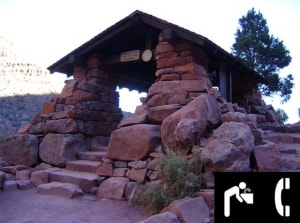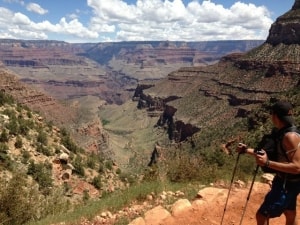Which hike is easier, ascending (upper canyon) or descending (lower canyon)?
Upper Canyon trips/hiking up and out requires greater stamina/endurance and is more demanding on the heart and lungs. This route is easier on the joints but requires more muscular strength. An advantage is that you will already be acclimated to the dry canyon environment from your rafting adventure, and as you ascend you’ll be hiking out of the heat. The temperature at the rim is about 20 degrees cooler than at the bottom of the canyon. Trekking poles are highly recommended as they can significantly reduce the stress on your lower leg muscles/joints by distributing the weight to your upper body muscles.
Lower canyon trips while less taxing with regards to cardio, is much more strenuous on the ankles/knees/hips and calf muscles. There is a significant amount of abuse that your joints endure due to constant downhill trekking, especially when you include the additional weight from your day or backpack. This descent should be attempted by those who do not have major joint issues which can cause potential problems during this hike.
Note that you will be hiking into the heat. Depending on the time of year, the temperature at the rim can be in the upper 40’s and temperatures may reach 110 at the bottom. Trekking poles are highly recommended as they can significantly reduce the stress on your lower leg muscles/joints by distributing the weight to your upper body muscles. Focusing on strengthening your leg muscles (calves and quads) is a crucial part of a successful hike.







